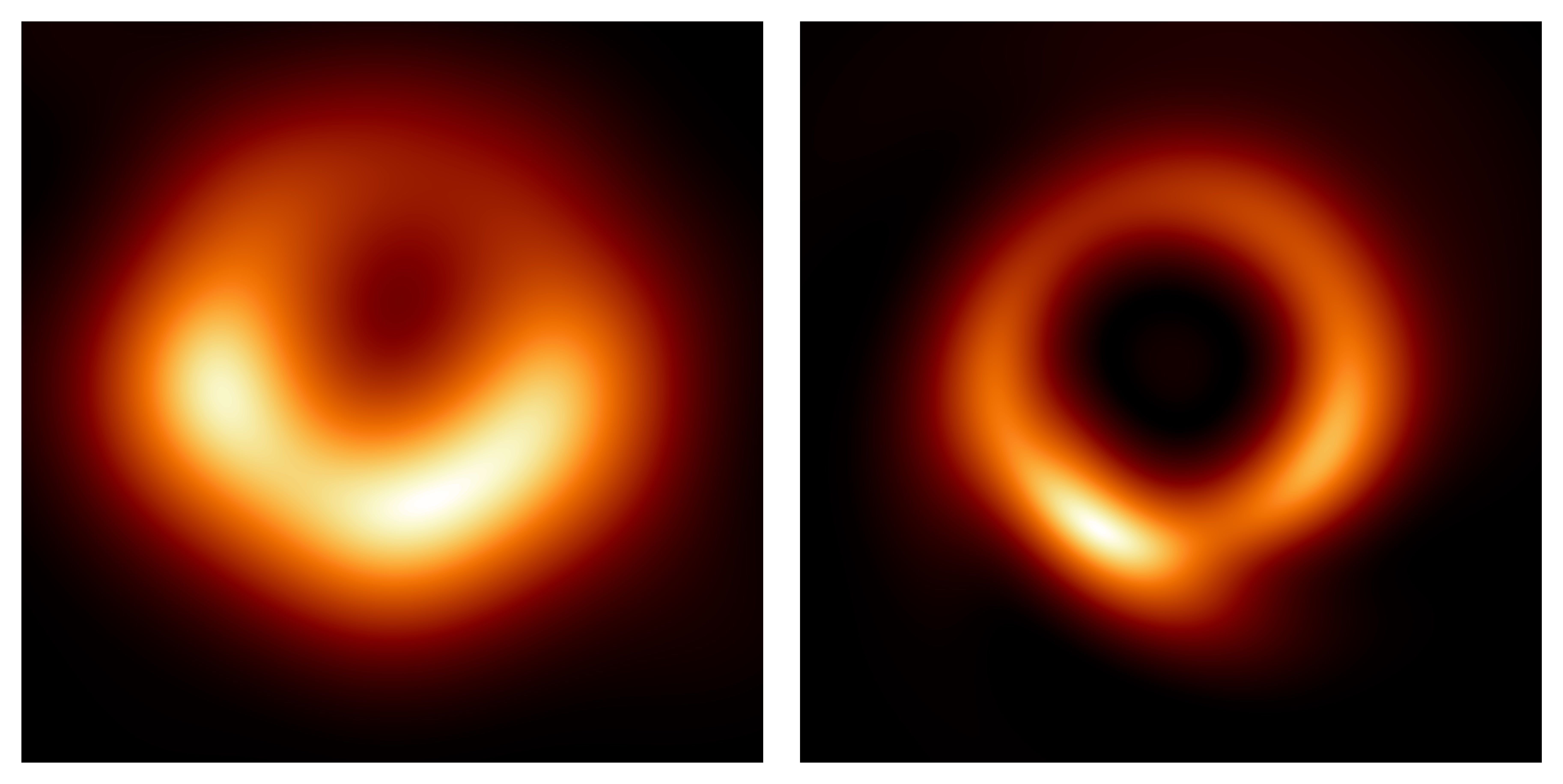Scientists release improved new image of first black hole ever seen
Artificial intelligence used to dramatically improve picture
Your support helps us to tell the story
From reproductive rights to climate change to Big Tech, The Independent is on the ground when the story is developing. Whether it's investigating the financials of Elon Musk's pro-Trump PAC or producing our latest documentary, 'The A Word', which shines a light on the American women fighting for reproductive rights, we know how important it is to parse out the facts from the messaging.
At such a critical moment in US history, we need reporters on the ground. Your donation allows us to keep sending journalists to speak to both sides of the story.
The Independent is trusted by Americans across the entire political spectrum. And unlike many other quality news outlets, we choose not to lock Americans out of our reporting and analysis with paywalls. We believe quality journalism should be available to everyone, paid for by those who can afford it.
Your support makes all the difference.Scientists have released a dramatically improved version of the first black hole that was ever seen.
In 2017, the Event Horizon Telescope (EHT) collaboration gathered data on M87*, a black hole at the centre of a nearby galaxy. That data was used to create an image of the black hole, which appeared as a “fuzzy, orange” donut when it was shown in an image released two years later.
Now, scientists have used artificial intelligence to improve that image and produce a full resolution picture of that black hole for the first time.

As well as giving us an even better image of that black hole, scientists hope that can provide further information on those still mysterious, intense and massive objects.
“With our new machine learning technique, PRIMO, we were able to achieve the maximum resolution of the current array,” says lead author Lia Medeiros of the Institute for Advanced Study, in a statement. “Since we cannot study black holes up-close, the detail of an image plays a critical role in our ability to understand its behavior.
“The width of the ring in the image is now smaller by about a factor of two, which will be a powerful constraint for our theoretical models and tests of gravity.”
PRIMO stands for principal-component interferometric modeling and was developed by members of the EHT collaboration. The researchers describe the machine learning technology as well as the new image in a new paper, ‘The Image of the M87 Black Hole Reconstructed with PRIMO’, published in The Astrophysical Journal Letters.
Though the EHT has sometimes been described as turning the whole Earth into a telescope – by combing data from seven existing telescopes around the world – it is unfeasible to cover the whole planet with them. That means there are missing gaps in the images.
“PRIMO is a new approach to the difficult task of constructing images from EHT observations,” said Tod Lauer, from NOIRLab, another member of the team behind it.
“It provides a way to compensate for the missing information about the object being observed, which is required to generate the image that would have been seen using a single gigantic radio telescope the size of the Earth.”
It works like other machine learning tools: by being shown an array of training material and then using that to see patterns in future, unknown images. In this case that meant giving the system 30,000 detailed, simulated images of black holes accreting gas – and then using that to spot what might be missing in the real image.
The findings and the new image they were used to produce is consistent with both data from the EHT as well as what theory would leave researchers to expect.
“We are using physics to fill in regions of missing data in a way that has never been done before by using machine learning,” said Dr Medeiros. “This could have important implications for interferometry, which plays a role in fields from exo-planets to medicine.”
Scientists hope to use the new image to learn more about both the M87 black hole as well as the objects in general. It should let them better understand its mass, for instance, as well as understand how they interact with the universe around them.

Join our commenting forum
Join thought-provoking conversations, follow other Independent readers and see their replies
Comments